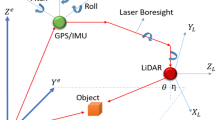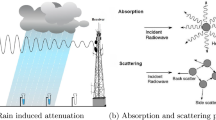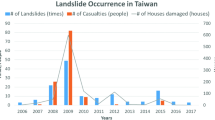Abstract
Path loss prediction is quite important for the network performance of the wireless sensors, quality of cellular communication-based link budget, and optimization of coverage planning in mobile networks. With the development of 5G technology, even though different log-distance path loss models are generated for these, new-developed methods are required to make models more flexible and accurate for complex environments. In this study, for different coastal terrains (air-dry sand, wet sand, small pebble, big pebble) and various vegetable areas (pine, orange, cherry, and walnut), the principle and procedure of deep learning-based path loss prediction are provided in 3.5 GHz, 3.8 GHz, and 4.2 GHz in the 5G frequency zone, as a novelty. For this, recurrent neural network (RNN) and long short-term memory (LSTM) methods are proposed. The test sample number is 240 since 20% of all datasets (1200) are test data. In general, path loss for coastal terrains is higher than path loss for vegetation areas with an average of 5 dB. For both coastal terrains and vegetation areas, the recurrent neural network method predicts better than the long short-term memory method. Consequently, for both coastal terrains and vegetation areas, RNN models with R2 values of 0.9677 and 0.9042, respectively, are preferred.








Similar content being viewed by others
References
Cheerla, S., Ratnam, D. V., & Borra, H. S. (2018). Neural network-based path loss model for cellular mobile networks at 800 and 1800 MHz bands. AEU-International Journal of Electronics and Communications, 94, 179–186.
Hejselbaek, J., Odum Nielsen, J., Fan, W., & Pedersen, G. F. (2018). Empirical study of near ground propagation in forest terrain for internet-of-things type device-to-device communication. IEEE Access, 6, 54052–54063.
Azevedo, J. A., & Santos, F. E. (2017). A model to estimate the path loss in areas with foliage of trees. AEU-International Journal of Electronics and Communications, 71, 157–161.
Eras, L. E. C., Silva, D. K. N. D., Barros, F. B., Correia, L. M., & Cavalcante, G. P. S. (2018). A radio propagation model for mixed paths in amazon environments for the uhf band. Wireless Communications and Mobile Computing, 2018, 1–15.
Basyigit, I. B., & Dogan, H. (2020). Troubleshooting of handover problems in 900 MHz for speech quality. Wireless Personal Communications, 114, 1833–1845.
Picallo, I., Klaina, H., Lopez-Iturri, P., Aguirre, E., Celaya-Echarri, M., Azpilicueta, L., Eguizábal, A., Falcone, F., & Alejos, A. (2019). A radio channel model for d2d communications blocked by single trees in forest environments. Sensors, 19(21), 4606. https://doi.org/10.3390/s19214606.
Cama-Pinto, D., & Damas, A. (2019). Path loss determination using linear and cubic regression inside a classic tomato greenhouse. International Journal of Environmental Research and Public Health, 16(10), 1744.
Raheemah, A., Sabri, N., Salim, M. S., Ehkan, P., & Ahmad, R. B. (2016). New empirical path loss model for wireless sensor networks in mango greenhouses. Computers and Electronics in Agriculture, 127, 553–560.
Genc, A. (2021). A new path loss model based on the volumetric occupancy rate for the pine forests at 5G frequency band. International Journal of Microwave and Wireless Technologies, 13(2), 144–153.
Meng, Y. S., & Lee, Y. H. (2009). Empirical near ground path loss modeling in a forest at VHF and UHF bands. IEEE Transactions on Antennas and Propagation, 57(5), 1461–1468.
Dogan, H. (2021). A new empirical propagation model depending on volumetric density in citrus orchards for wireless sensor network applications at sub-6 GHz frequency region. International Journal of RF and Microwave Computer-Aided Engineering, e22778, 1–10.
Rao, T. R., & Balachander, D. (2013). Ultra-high frequency near-ground short-range propagation measurements in forest and plantation environments for wireless sensor networks. IET Wireless Sensor Systems, 3(1), 80–84.
Olasupo, T. O., & Otero, C. E. (2016). Empirical path loss models for wireless sensor network deployments in short and tall natural grass environments. IEEE Transactions on Antennas and Propagation, 64(9), 4012–4021.
Cheffena, M., & Mohamed, M. (2017). Empirical path loss models for wireless sensor network deployment in snowy environments. IEEE Antennas and Wireless Propagation Letters, 16, 2877–2880.
Alsayyari, A., & Kostanic, I. (2014) An empirical path loss model for wireless sensor network deployment in a sand terrain environment. In: 2014 IEEE World Forum on Internet of Things (WF-IoT), pp. 218–223.
Li, Q., & Zhang, H. (2019). A new method for path-loss modeling. International Journal of Microwave and Wireless Technologies, 11(8), 739–746.
Kurnaz, O., & Helhel, S. (2014). Near ground propagation model for pine tree forest environment. AEU-International Journal of Electronics and Communications, 68(10), 944–950.
Leonor, N. R., & Caldeirinha, R. F. (2014). A 2D ray-tracing based model for micro-and millimeter-wave propagation through vegetation. IEEE Transactions on Antennas and Propagation, 62(12), 6443–6453.
Gay-Fernández, J. A., & Cuinas, I. (2014). Short-term modeling in vegetation media at wireless network frequency bands. IEEE Transactions on Antennas and Propagation, 62(6), 3330–3337.
Gay-Fernandez, J. A., & Cuinas, I. (2013). Peer to peer wireless propagation measurements and path-loss modeling in vegetated environments. IEEE Transactions on Antennas and Propagation, 61(6), 3302–3311.
Gay-Fernández & J. A. (2011). Radio-electric validation of an electronic cowbell based on ZigBee technology. IEEE Antennas and Propagation Magazine, 53(4), 40–44.
Saunders, S. R., & Aragón-Zavala, A. (2007). Antennas and propagation for wireless communication systems (2nd ed., pp. 89–102). Delhi: Pashupai Printing.
He, R., & Zhong, Z. (2012). Analysis of the relation between Fresnel zone and path loss exponent based on two-ray model. IEEE Antennas and Wireless Propagation Letters, 11, 208–211.
Jarndal, A., & Alnajjar, K. (2018). MM-wave wideband propagation model for wireless communications in built-up environments. Physical communication, 28, 97–107.
Zang, J., & Wang, X. (2017). Measurements and modeling of path loss over irregular terrain for near-ground and short-range communications. Progress in Electromagnetics Research M, 57, 55–62.
Akyildiz, I. F., & Vuran, M. C. (2010). Wireless sensor networks (pp. 123–156). Wiley. ISBN-13: 978-0470036013.
Sawant, R. P. & Liang, Q. (2007). Experimental path loss models for wireless sensor networks. In MILCOM 2007-IEEE Military Communications Conference, pp. 1–7.
Olasupo, T., & Shaikh, S. (2015). Effects of terrain variations in wireless sensor network deployments. In IEEE International RF and Microwave Conference (RFM), pp. 83–88.
Cassel, M., & Dépret, T. (2017). Assessment of a new solution for tracking pebbles in rivers based on active RFID. Earth Surface Processes and Landforms, 42(13), 1938–1951.
Papini, M., & Ivanov, V. I. (2017). Monitoring bedload sediment transport in a pre-alpine river: An experimental method. Rendiconti Online Societa Geologica Italiana, 43, 57–63.
Malon, K., Skokowski, P., & Lopatka, J. (2018). Optimization of wireless sensor network deployment for electromagnetic situation monitoring. International Journal of Microwave and Wireless Technologies, 10(7), 746–753.
Van Khoa, V., & Takayama, S. (2018). Wireless sensor network in landslide monitoring system with remote data management. Measurement, 118, 214–229.
Balaji, S., & Anitha, M. (2020). Energy efficient target coverage for a wireless sensor network. Measurement, 165, 108167.
Usman, M., & Gebremariam, A. A. (2015). A software-defined device-to-device communication architecture for public safety applications in 5G networks. IEEE Access, 3, 1649–1654.
Mahmoud, H. H., & ElAttar, H. M. (2017). Optimal operational parameters for 5G energy harvesting cognitive wireless sensor networks. IETE Technical Review, 34(sup1), 62–72.
Ahmadien, O., & Ates, H. F. (2020). Predicting path loss distribution of an area from satellite images using deep learning. IEEE Access, 8, 64982–64991.
Thrane, J., & Zibar, D. (2020). Model-aided deep learning method for path loss prediction in mobile communication systems at 2.6 GHz. IEEE Access, 8, 7925–7936.
Calik, N., & Belen, M. A. (2020). Deep learning base modified MLP model for precise scattering parameter prediction of capacitive feed antenna. International Journal of Numerical Modelling: Electronic Networks, Devices and Fields, 33(2), e2682.
Donkers, T., & Loepp, B. (2017). Sequential user-based recurrent neural network recommendations. In Proceedings of the eleventh ACM conference on recommender systems, pp. 152–160.
Ta, V. D., & Liu, C. M. (2020). Portfolio optimization-based stock prediction using long-short term memory network in quantitative trading. Applied Sciences, 10(2), 437.
Basyigit, I. B., Genc, A., Dogan, H., Senel, F. A., & Helhel, S. (2021). Deep learning for both broadband prediction of the radiated emission from heatsinks and heatsink optimization. Engineering Science and Technology, an International Journal, 24(3), 706–714.
Metlek, S., Kayaalp, K., Basyigit, I. B., Genc, A., & Dogan, H. (2021). The dielectric properties prediction of the vegetation depending on the moisture content using the deep neural network model. International Journal of RF and Microwave Computer-Aided Engineering, 31(1), e22496.
Roy, K., & Mandal, K. K. (2019). Ant-Lion Optimizer algorithm and recurrent neural network for energy management of micro grid connected system. Energy, 167, 402–416.
Bistron, M., & Piotrowski, Z. (2021). Artificial intelligence applications in military systems and their influence on sense of security of citizens. Electronics, 10(7), 871.
Negassi, M., & Suarez-Ibarrola, R. (2020). Application of artificial neural networks for automated analysis of cystoscopic images: A review of the current status and future prospects. World Journal of Urology, 38(10), 2349–2358.
Tran-Ngoc, H., & Khatir, S. (2021). Efficient Artificial neural networks based on a hybrid metaheuristic optimization algorithm for damage detection in laminated composite structures. Composite Structures, 262(113339), 1–16.
Alamia, A., & Gauducheau, V. (2020). Comparing feedforward and recurrent neural network architectures with human behavior in artificial grammar learning. Scientific Reports, 10(1), 1–15.
Bai, Y., & Xie, J. (2021). Regression modeling for enterprise electricity consumption: a comparison of recurrent neural network and its variants. International Journal of Electrical Power & Energy Systems, 126, 106612.
Hochreiter, S., & Schmidhuber, J. (1997). Long short-term memory. Neural Computation, 9(8), 1735–1780.
Author information
Authors and Affiliations
Corresponding author
Additional information
Publisher's Note
Springer Nature remains neutral with regard to jurisdictional claims in published maps and institutional affiliations.
Rights and permissions
Springer Nature or its licensor (e.g. a society or other partner) holds exclusive rights to this article under a publishing agreement with the author(s) or other rightsholder(s); author self-archiving of the accepted manuscript version of this article is solely governed by the terms of such publishing agreement and applicable law.
About this article
Cite this article
Kayaalp, K., Metlek, S., Genc, A. et al. Prediction of path loss in coastal and vegetative environments with deep learning at 5G sub-6 GHz. Wireless Netw 29, 2471–2480 (2023). https://doi.org/10.1007/s11276-023-03285-w
Accepted:
Published:
Issue Date:
DOI: https://doi.org/10.1007/s11276-023-03285-w




